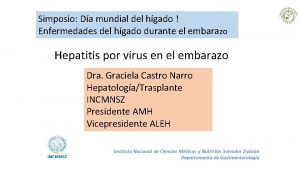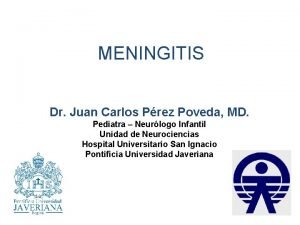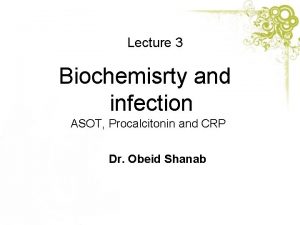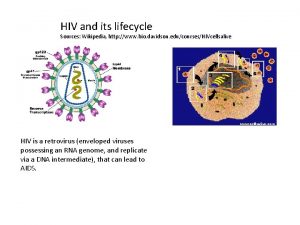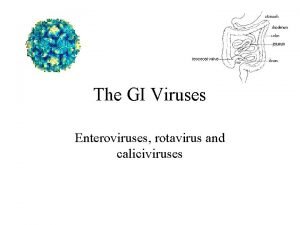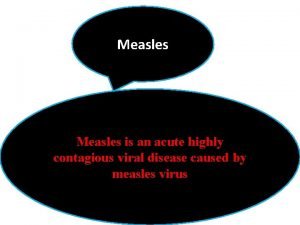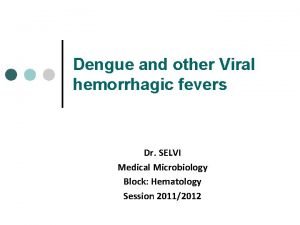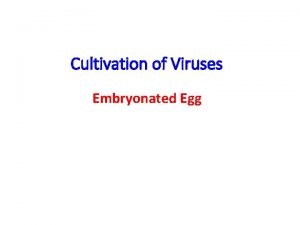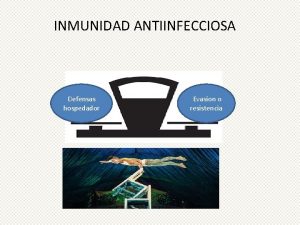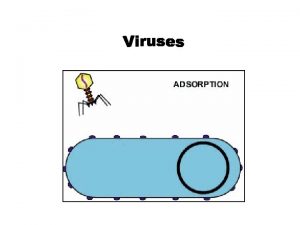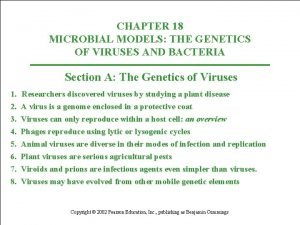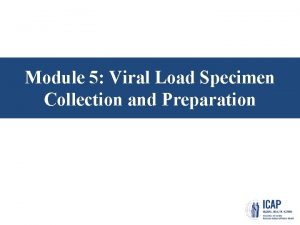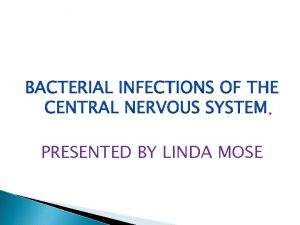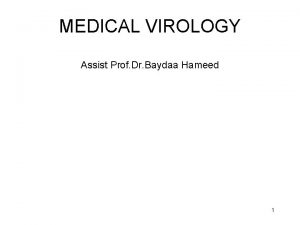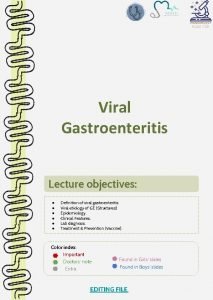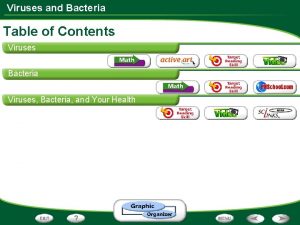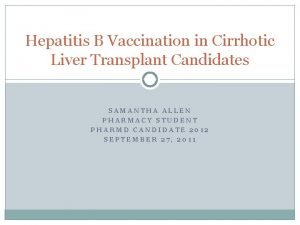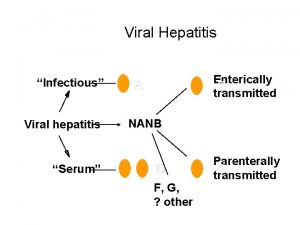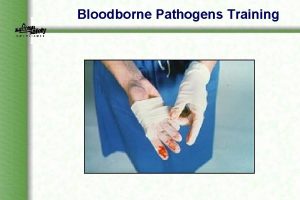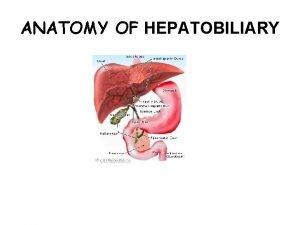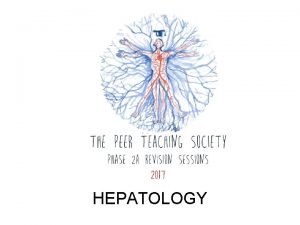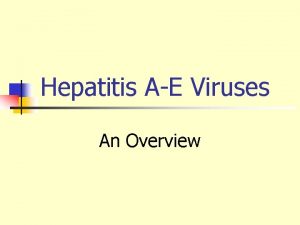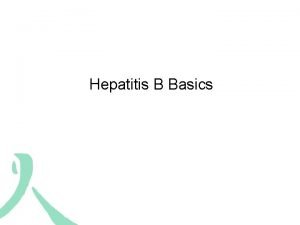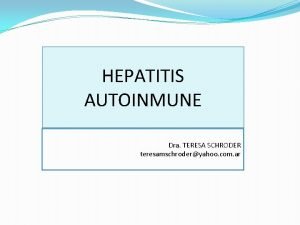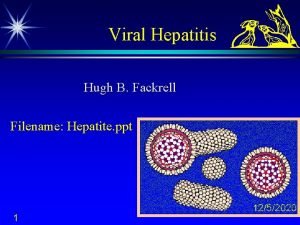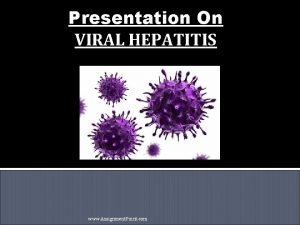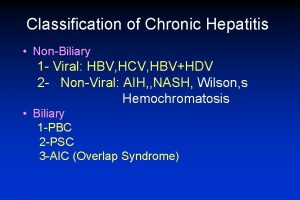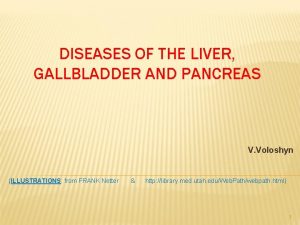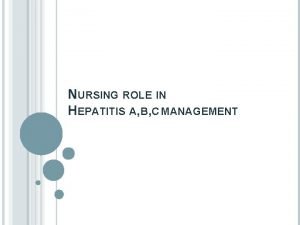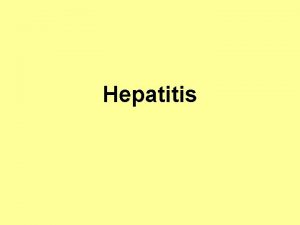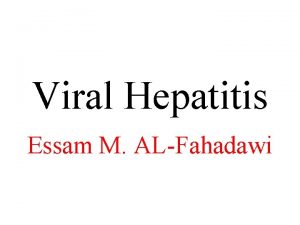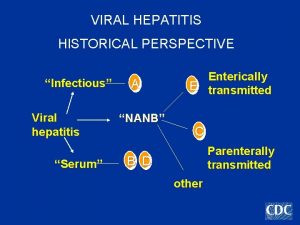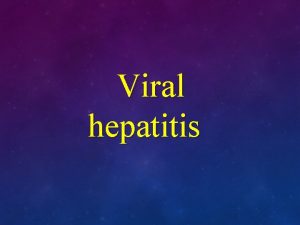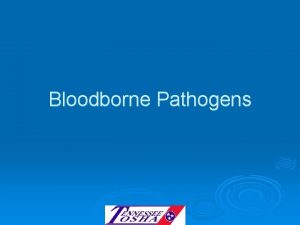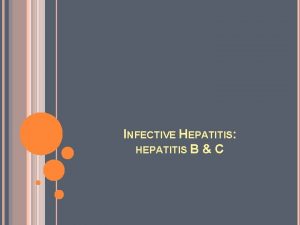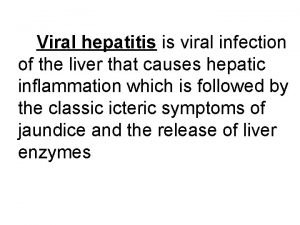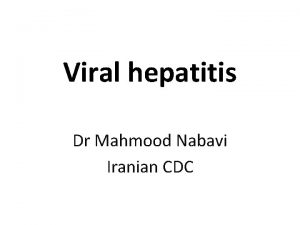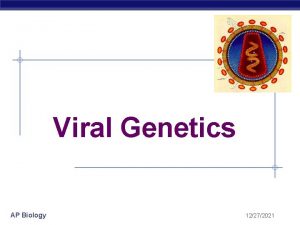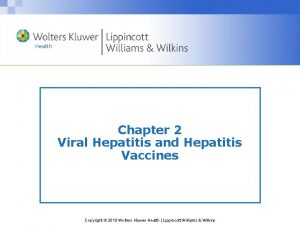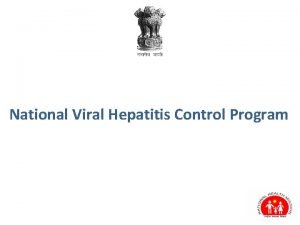Viral hepatitis synopsis Viral hepatitis is a group
































































- Slides: 64

Viral hepatitis

synopsis • Viral hepatitis is a group systemic infection affecting the liver predominantly caused by 5 kinds of viruses at least • Viral hepatitis may be divided into 5 types according to etiology, that is hepatitis A, B, C, D and E • Although the agents can be distinguished by its antigenic properties, the 5 kinds of viruses may produce clinical similar illness

Synopsis • Clinical manifestations are characterized by anorexia, nausea, lassitude, enlarged liver and abnormal liver function, a part of cases may appear jaundice. Subclinical infection is common • Hepatitis A and E shows acute hepatitis, hepatitis B, C and D predispose to a chronic hepatitis and is related to liver cirrhosis and hepatic cancer • The course of acute hepatitis is about 2 -4 months generally. • Recently, 2 kinds of viruses named HGV and TTV are discovered and considered to relate to viral hepatitis

Etiology u. Hepatitis A virus (HAV) • HAV is one kind of picornavirus and used to be classified as enterovirus type 72, but recently, it is considered to be classified as heparnavirus • Hepatitis A virion is a naked spherical particle, diameter 27 nm • Consists of a genome of linear, single-stranded RNA, 7. 5 kb. The genome may be divided into 3 coding region: P 1 region (encoding structural protein), P 2 and P 3 regions (encoding non-structure protein) • During acute stage of infection, HAV can be found in blood and feces of infected human and primates • Marmoset and chimpanzee are susceptible animals

Etiology u. Hepatitis A virus (HAV) • HAV can not cause cytopathy, replicate within cytoplasma of hepatocytes and via bill are discharged with feces • 7 genetypes, 1, 2, 3, 7 types from humanbody • Only one antigen-antibody system. Anti-HAV Ig. M is diagnostic evidence of recent infection, Ig. G is protective antibody. • Resistance of HAV: 56°C, 30 min, usually temperature 1 week, dry feces at 25°C 30 days, fresh water, sea water , shellfish or soil for several months. 70% alcohol at 25°C , 3 min, 100°C, 5 min and ultraviolet, 1 min

HAV

Etiology n Hepatitis B virus (HBV) • HBV is a kind of hepadnavirus • Three particles in serum: spherical particles and tubular particles with a diameter of 20 nm, composed of HBs. Ag large particles with a diameter of 42 nm, named Dane particle. It consists of an outer protein shell (envelope, contain HBs. Ag) and an inner body ( core, contain HBc. Ag, HBe. Ag, HBVDNA and DNAP )

Etiology n Hepatitis B virus (HBV) • Hepatitis B virion genome is a small circular, partially double stranded DNA with 3200 nucleotides long. HBV DNA is asymmetry in length of two strands: minus strand (long strand, L) has full length. Four open reading frames (ORF) coded on the minus strand: C, S, X, and P region



Etiology n Hepatitis B virus (HBV) • Four open reading frames (ORF) S region: include pre-s 1, pre-s 2 and S gene, encoded pre-s 1 protein, pre-s 2 protein and HBs. Ag. Pre-s 1 protein + pre-s 2 protein + HBs. Ag—large protein Pre-s 2 protein + HBs. Ag—middle protein HBs. Ag—major protein C region included pre-c and C gene, encode HBe. Ag and HBc. Ag X region encoded HBx. Ag P region encoded DNA polymerase

etiology • Three antigen-antibody system HBs. Ag-- anti-HBs system: Ø Include HBs. Ag, anti-HBs, pre-s 1, s 2 antigen and anti-pres 1, s 2 Ø HBs. Ag appears 1 -2 weeks (late to 11 -12 weeks) after exposure, persists for 1 -6 weeks( even 5 months) in acute hepatitis B. In chronic patients or carrier, HBs. Ag persist many years Ø HBs. Ag antigencity but no infectivity Ø HBs. Ag is the marker of infectivity Ø HBs. Ag can be found in humors and secretions: salive, urine, semina, tears, sweat and breast milk Ø 10 subtype of HBs. Ag, 4 major subtypes: adr, adw, ayr, ayw. Ø Anti-HBs appear after HBs. Ag disappear several weeks (or months) anti-HBs is protective antibody, can persist for many years Ø pre-s 1 and pre-s 2 antigens appear following HBs. Ag. They are the marker of infectivity. Anti –pre s 2 has the action of clearing virus

Etiology • HBc. Ag—anti-HBc system Ø HBc. Ag can be found in the nuclei of liver cells, no free HBc. Ag in serum Ø HBc. Ag is the marker of replication of HBV Ø The stage called window phase Ø Anti-HBc Ig. M is a marker of acute infection and acute attack of chronic infection of HBV. Anti. HBc Ig. G is the marker of past infection, high titer means low level replication of HBV

Etiology • HBe. Ag—anti-HBe system Ø HBe. Ag is a soliable antigen Ø HBe. Ag is a reliable indicator of active replication of HBV Ø Anti-HBe is a marker of reduced infectivity. If exist long may be a marker of integration of HBV into liver cell

Etiology • The marker of molecular biology of HBV • HBV-DNA The direct indicator of HBV infection Can integrate into the genome of hepatocytes • HBV DNA polymerase Possesses the ability of reverse transcriptase and the indicator of the ability of replication of HBV

Etiology • HBx. Ag Related to chronicity, activity of hepatitis B or liver cancer • Resistance Resistant to heating and common disinfections. Chimpanzee is susceptible to HBV

Etiology n Hepatitis C virus (HCV) • HCV is a member of flavivirus family. • HCV genome is a single stranded positive-sense RNA and contains 9. 4 kb • The genome contains 5’-non coding region, C region, E region and NS region • HCV genome may be divided into many types and subtypes. • Resistance • Antigen-antibody system • The concentration of HCV in blood is low, HCV Ag has not be detected, anti-HCV is the indicator of infection and the marker of infectivity • HCV-RNA may be detected from blood or liver tissue, it’s the direct evidence of infectivity

HCV

Etiology n Hepatitis D virus (HDV) • HDV (Delta hepatitis virus) is a kind of defective virus • HDV is found in the nuclei of infected hepatocytes and replicate • HDV genome is a circular single strand RNA and contains 1. 7 kb • The replication of HDV depends on HBV or other hepadnavirus, coated by HBs. Ag in blood • HDV has one antigen-antibody system No free HDAg is detected in blood, it’s in the nuclei of hepatocytes; anti-HDV can be detected by RIA or ELISA in serum • HBV and HDV co-infection or superinfection may make the disease exacerbation and may lead to fulminant hepatitis • HDV RNA may be detected from liver cells, blood or humor. • Resistance

Etiology n Hepatitis E virus (HEV) • HEV is a member of calicivirus family. • HEV is a spherical nuenveloped icosahedral particles. • HEV genome is a single strand, positive –sense RNA (7. 5 kb), include structure and non-structure region Three ORF-1: encoding non-structure protein ORF-2: encoding neucleocapside protein ORF-3: encoding a part of neucleocapside protein • 2 subtype of HEV founded : Burma subtype and Mexico subtype ; or epidemic strain and sporadic strain • HEV replication within hepatocytes and via bill tract is discharged • Monkeys and chimpanzee are susceptible to HEV • One antigen-antibody system n HGV, TTV

HEV

Epidemiology n Source of infection Ø Hepatitis A and E: patients with acute hepatitis and person with sublinical infection Ø Hepatitis B, C and D: patients with acute, chronic hepatitis B, C, and D and carriers n Route of transmission Ø Hepatitis A and E: fecal-oral route predominantly

Epidemiology § Route of transmission Ø Hepatitis B, C, and D: • humoral transmission (parenteral transmission) • Mather to infent transmission(vertical transmission) • Sexual contact transmission • Insect transmission

Epidemiology • Susceptibility and immunity of population Ø Hepatitis A Most adult has anti-HAV due to covert infection. Infent under 6 month acquired antibody from mother. Young children is susceptible Ø Hepatitis B Infents are susceptible to HB after boring. HBV infection developed in infents children and teenages Ø Hepatitis C Population is common susceptible. Anti-HCV is not protective antibody. Ø Hepatitis D Common susceptible Ø Hepatitis E Common susceptible. Children appear covert infection, adult show overt infection

Epidemic feature • Sporadic occurrence – Hepatitis A: sporadic occurrence may seen in developing countries of high epidemic area – Hepatitis B: sporadic occurrence is major mode of onset for HB. , there is family clustering phenomenon which is related with vertical infection – Hepatitis C: non-transfusion HC is called sporadic HC by mother to infant or life CONTACTTRASMISSION

• Hepatitis E: in non-epidemic area, HE is sporadic occurrence • Outbreak epidemic – Due to food and water are contaminated lead to outbreak of HA and HE • Seasonal distribution – HA: most cases developed in autumn and winter – HE: most cases developed in summer and autumn

• Geographic distribution – HA: geographic distribution is not obvious – HB: may be divided into three areas • High epidemic area: HBs. Ag carrier rate is 8 -20% • Moderate epidemic area: HBs. Ag carrier rate is 2 -7% • Low epidemic area: HBs. Ag carrier rate is 0. 2 -0. 5% – HC: no different infection rate – HD: world wide distribution – HE: developing countries are major epidemic areas such as Asia, Africa

pathogenesis • Hepatitis A: HAV invade into human body by mouth and cause viremia. After one week, the HAV reach liver cells replicate within. Then enter intestien with bill and appear in feces. someone believe that damage of liver cells maybe caused by immune response. Due to: – HAV does not cause cytopathy

– After HAV replicating and discharging, liver cells damage begin – Animal experiment proved that immune complex may attend the pathogenesis of HA – Complement level reduce the pathogenesis maybe following: activated T cell secrete γ-INF that promote the representation of HLA-Ⅰantigen on the liver cells, CTL may kill the target cell infected with HAV

• Hepatitis B: – HBV invade into the human body by skin and mucosa, via blood flow enter the liver and other organs such as pancreas, bill duct, vessels, WBC, bone marrow, glomerular basement membrans – HBc. Ag, HBs. Ag, HBe. Ag and HLA-Ⅰappear on the liver cells infected with are recognized by CTL simultaneously and lead to the cytolysis of liver cells

– Help T cell are activated by the receptor of HLA-Ⅱ on its surface combing with HBs. Ag, HBc. Ag and HLA-Ⅱ antigen on the B cells promote B cell to release anti-HBs and clear HBV – The representation of HBc. Ag on the liver cells may cause cytopethy – High degree representation of HBs. Ag within liver cells but the secretion is not enough lead to ground-glass-like change of liver cells

– Antigen-antibody complex precipitated on the wall of blood vessels and glomerular basement membrans causing nephritis or noduse polyarteritis, fever, rush and arthralgia called serum sick-like reaction – TNF, IL-1, IL-6 may play roles in pathogenesis – Chronicity of hepatitis B is related to immune tolerance, immune suppress and genetic factors – HBV infection is related to HCC closely

• Hepatitis C – Is similar to that of HB. CTL and some cytokines play an important action – The chronicity is related to the variability of gene – HCV infection is related to HCC closely but HCV does not integrate to liver cells, so from HCV infection to HCC may be related to chronic inflammation and cirrhosis

Pathology – Degeneration – Necrosis – Regeneration – Infiltration of inflammatory cells – Hyperplasia of interstitial cells

• Acute viral hepatitis – The degeneration of liver cells include ballooning degeneration, fatty degeneration, acidophilic degeneration – Cell nucleus vacuolar degeneration – Focal or spotty necrosis and regeneration – The infiltration of mononuclear cell, plasmocyte , lymphocyte in portal area – Cholestasis and form of bile thrombas in bile capillaries of liver – Piecemeal necrosis

• Chronic viral hepatitis – Mild chronic hepatitis G 1 -2, S 0 -2 • Degeneration, spotty, focal necrosis, acidophilic body • Portal may have or no the infiltration of inflammation cell, mild PN or enlarged • The structure is intact – Moderate chronic hepatitis(CAH) • Portal area have obvious inflammation, with moderate PN • Severe inflammation with BN of intralobule • Form fibrous septum, most the structure of lobule reserved

– Severe chronic hepatitis • Portal area has severe inflammation with severe PN • BN of extensive range involving several lobulus • Much more fibrous septums distortion of lobule structure or form early liver cirrhosis • Fulminant viral hepatitis(hepatitis gravis) – Acute hepatitis gravis: liver cells show massive necrosis including great among of liver cells. Necrosis and reticular fiber network collapse, so the liver is greatly reduce in sizeacute yellow hepatic etrophy

– Subacute hepatitis gravis • Except massive necrosis, there are ball-like regeneration of liver cells • New connective tissue which form fibrous band separate the liver cells regenerated forming pseudolobuli • Bile capillaries hyperplasia – Chronic hepatitis gravis: base on the pathologic changes of chronic hepatitis or liver cirrhosis, there are massive or sub massive necrosis of liver cells

• Cholestatic viral hepatitis – There are the changes of acute hepatitis – There is obvious cholestasis – In severe cases, the liver cells may appear glandular duct like – Portal area shows edeme and small bile duct is dilation

pathophysiology • Jaundice the jaundice is mainly hepatocytic jaundice and part obstructive jaundice • Hepatic encephalopathy – – Retention of toxic material lead to poisoning of CNS Imbalance of aminoacid False neurotransmitter hypothesis Other evoked factors

• Hemorrage Deficiency of many kinds of blood coagulating factors, DIC, thrombucytopenia lead to hemorrage • Acute renal failure (hepatic-renal syndrome) • Hepatopulmonary syndrome • Ascites

Clinical manifestation • Incubation period – – – HA HB HC HD HE 15 -45 days 30 -180 days 15 -150 days similar to HB 10 -70 days 30 days 70 days 50 days 40 days • Clinical types – Acute viral hepatitis • Acute icteric viral hepatitis • Acute anicteric viral hepatitis

– Chronic viral hepatitis • Mild chronic viral hepatitis • Moderate chronic viral hepatitis • Severe chronic viral hepatitis – Hepatitis gravis • Acute hepatitis gravis • Subacute hepatitis gravis • Chronic hepatitis gravis – Cholestatic viral hepatitis • Acute viral hepatitis – Acute icteric viral hepatitis the cause may be 2 -4 months and divided three periods

• Preicteric period – In HA, HE, the onset is abrupt with fever; but HB, HC, the onset is insidious. – The initial symptoms: loss of appetite, nausea, vomiting lassitude, abdominal pain and diarrhea. – The end of the period, the urine darkens. A few patients, especial children, fever, headache, upper respiratory tract symptome are main manifestations – The duration of this period varies from 1 -21 days, average 5 -7 days • Ictoric period – The urine deepens continuously and jaundice appears on the skin and sclera within 2 weeks – Subjective symptoms is abate – Pruritus may appear about 1 week – Liver palpable 7%, spleen palpable 20% – The period lasts 2 -6 weeks

• Convalscent period – The jaundice disappear gradually, symptoms abate or disappear – Liver and spleen retract, liver function return to normal – The period lasts 2 weeks to 4 months, average 1 month – About 10% of HB and 50% of HC will become chronic hepatitis – Acute hepatitis D: » Co-infection with HBV » Super-infection with HBV – Acute hepatitis E is similar to acute hepatitis A, but cholestasis is obvious and symptoms and signs is severe. – If women with pregnancy suffer from the HE-- fulminant hepatitis – If HB super-infect HEV or HCV--fulminant hepatitis

– Acute anicteric hepatitis • All of 5 kinds of hepatitis virus can cause acute anicteric hepatitis. This type is most common. • Important source of infection • Chronic viral hepatitis Only appear in HBV, HCV and HDV infection – Mild chronic hepatitis • The course is more than half year • Fatigue, dizziness, digestive tract symptoms, dull pain of liver, enlarged liver tenderness or spleen tenderness, lower degree of fever, ALT↑, the pathology change has only mild • The course may persist many years

– Moderate • • • The course →half year The symptom are obvious Spider nevus, liver palms, hepatic face Dysfunction of liver Accompany the lesions of other organs and presence of autoantibody • Reverse the ratio of albumin/globulin • Biopsy show the changes of mild CAH – Severe • Except symptoms and signs mentioned, the biopsy show the changes of early cirrhosis and clinical manifestations of compensatory cirrhosis

• Hepatitis gravis All of five kinds of hepatitis virus can cause this type of hepatitis. The incidence is only 0. 2 -0. 5%, but the mortality is the highest. – Acute hepatitis gravis • The onset may begin in a typical acute icteric hepatitis, but within 10 days • Jaundice deepens rapidly • Vomit is frequent • Obvious anorexia • Hemorrhage • The liver shrinks in size • Toxic intestinal tympenice • Prothrombin time is prolonged • Ascites appear • Acute renal failure • Hepatic encephalopathy

– Subacute hepatitis gravis • • The course of AIH is more than 10 days The hepatic encephalupathy appear later The course may be several months The postnecrotic cirrhosis may develop – Chronic hepatitis gravis • Based on chronic hepatitis or cirrhosis developed subacute hepatic necrotic • Cholestatic hepatitis – Intra hepatic cholestatic jaundice for a long time(2 -4 months or longer) – Pruritus – Pale feces – Hepatomogaly

– Subjective symptoms is slight – Course 2 -6 months – Recovery is complete • Manifostations of hepatitis for special population – Characteristics of hepatitis for child – Characteristics of hepatitis for the senility – The character of hepatitis of pregnancy period

Laboratory examination • Liver function – Serum transaminase • • ALT(alanine transferase) ↑ AST(aspartase transferase) ↑ ALP (Alkaline phosphatase) ↑ in chronic hepatitis LDH (Lactate dehydrogenase) ↑ – Serum protein • Albumin ↓ • In chronic hepatitis • The ratio of A/G ↓ Ig ↑↑ – Bilirubin • Urobilinogen ↑in early stage of AIH

• Urobilinogen and urobilin ↑in icteric stage • Urobilin is positive and urobilinogen may be negative in cholestatic hepatitis • In AIH, the directive bilirubin and indirective bilirubin ↑ – Prothrombin time may be prolonged especially in fulminant hepatitis – Blood amonia examination • Detection of the markers of hepatitis virus – Hepatitis A • Serologic marker – Anti-HAVIg. M: recent infection – Anti-HAVIg. G: past infection

• Marker of feces – HAV particles may be detected by RIA or IEM – Isolation of HAV may use tissue culture or animal inoculation – Hepatitis B • Sero-immunologic marker – HBs. Ag – HBc. Ag – HBe. Ag anti-HBs anti-HBc anti-Hbe • Molecular biological marker – DNAp – HBV DNA – Immune tissue chemistry examination – Hepatitis C • Serological marker – Anti-HCVIg. M – Anti-HCVIg. G

• Molecular biologic marker – HCV RNA may be detective by RT-PCR 1 -2 weeks after infection of HCV – Quality of HCV RNA – Immune tissue chemistry method detect HCAg within liver cells – Hepatitis D • HDAg anti-HDV • HDV RNA – Hepatitis E • Anti-HEVIg. G, Anti-HEVIgm • RT-PCR • HEV particais: IF IEM

• Ultra-sound examination • Liver biopsy • Other laboratory examination – Blood routine – Urine routine

Complication and prognosi • HB – Infection of biliary tract, pancreatitis, gastroenteritis – Diabetes – Hemolytic anemia, aplastic anemia – Myocarditis, polyarteritis, nodose – Glomerulo-nephritis, renal tubular, acidosis – Skin: allergic purpure – Cirrhosis – HCC

Diagnosis • Epidemiological data – HA, HE: food, water, seasonal, age – HB, HC: blood and blood product transfusion, contact history, inoculation history • Clinical diagnosis – Acute hepatitis – Chronic hepatitis

Degree of damage of liver Item mild ALT(u) <3 X TBIL(umol/L) 17. 1 -34. 2 ALB(g/L) ≥ 35 A/G 1. 3 -1. 5 -globulin ≤ 21 (electrophorosis) PTA(%) 71 -79 moderate severe 3 -10 X 34. 2 -85. 5 33 -34 1. 0 -1. 2 22 -25 >10 X >85. 5 ≤ 32 ≤ 0. 9 ≥ 26 61 -70 40 -60

– Hepatitis gravis • Etiological diagnosis – HA: Serum – HB: HBs. Ag DANp – HC: anti-HCV anti-HAVIg. M , Feces HBe. Ag anti-HBc Ig. M HBc. Ag HAV HBVDNA Ig. G – HD: HBs. Ag HDAg anti-HDV – HE: anti-HEV Ig. M Ig. G HEVRNA HEV particals in feces

Differential diagnosis • Acute icteric hepatitis – Must be differentiated with the jaundice caused by another disease • Hemolytic jaundice • Extrahepatic obstructive jaundice – Hepatitis caused by another reasons • • • Toxic hepatitis Infective toxic hepatitis Mononucleosis Alcohol hepatic disease Schistosomiosis Wilson disease

Treatment • Acute hepatitis – Isolation • • – – HA: 3 weeks after onset HB: HBs. Ag become negative HC: HCVRNA become negative HE: 2 weeks after onset Rest Diet Anti-virus therapy hepatinice

• Chronic hepatitis – – – Symptomatic therapy Diet Rest Hepatinice Supporting therapy Immunomodulator • Fuminant hepatitis – General and supporting therapy • Rest: strict bed rest • diet

• Supporting therapy – Symptomatic therapy • Hemorrhage: fresh blood, prothrombin complex, platelet • Hepatic encephalopathy – – – – Prevention and treatment of amino poisoning Recovery normal neurotransmitter Sodium glutamate and arginine Treatment of cerebral edema Control infection Prevention and treatment of renal failure Promoting the growth of liver cells – Liver transplantation • Cholestatic hepatitis: similar to acute hepatitis

prevention • Control of source of infection • Cut off the route of transmission • Protection of susceptible population – Active immunity – Passive immunity
 Hgado
Hgado Bacilos gram positivos meningitis
Bacilos gram positivos meningitis Infinitive viral infection
Infinitive viral infection Viral arthritis
Viral arthritis Viral inoculation in embryonated egg
Viral inoculation in embryonated egg Procalcitonin
Procalcitonin Viral integration
Viral integration Viral entry
Viral entry Varicela variola
Varicela variola Viral recombination
Viral recombination Replicação viral ciclo lítico e lisogênico
Replicação viral ciclo lítico e lisogênico An acute highly contagious viral disease
An acute highly contagious viral disease Causes of viral hemorrhagic fever
Causes of viral hemorrhagic fever Viral shedding
Viral shedding Equine viral rhinopneumonitis
Equine viral rhinopneumonitis Viral inoculation in embryonated egg
Viral inoculation in embryonated egg Vacinas subcutânea
Vacinas subcutânea The dynamics of viral marketing
The dynamics of viral marketing Exocitose
Exocitose Vaccins à vecteur viral
Vaccins à vecteur viral Section 24-1 viral structure and replication
Section 24-1 viral structure and replication Viral life cycle
Viral life cycle Ciclo viral
Ciclo viral Eline's viral
Eline's viral Viral dna
Viral dna Viral inoculation in embryonated egg
Viral inoculation in embryonated egg Capsid capsomere
Capsid capsomere Hemolyzed serum sample
Hemolyzed serum sample Menigitis csf
Menigitis csf Inklüzyon cisimcikleri
Inklüzyon cisimcikleri Viral receptors
Viral receptors Andrew lippman mit
Andrew lippman mit Rotarix live attenuated
Rotarix live attenuated Spasmodic croup vs viral croup
Spasmodic croup vs viral croup Viral
Viral Viral induced wheeze vs asthma
Viral induced wheeze vs asthma Hepatitis b vaccine series adults
Hepatitis b vaccine series adults Circulacion hiperdinamica
Circulacion hiperdinamica Hepatitis e
Hepatitis e Hepatitis symptome
Hepatitis symptome Cholecystitis nursing care plan
Cholecystitis nursing care plan Hepatitis c symptoms in men
Hepatitis c symptoms in men Porta hepatis
Porta hepatis Como funcionan las vacunas
Como funcionan las vacunas Ggh providencia
Ggh providencia Phases of chronic hepatitis b
Phases of chronic hepatitis b Chronic hepatitis
Chronic hepatitis Hepatitis b
Hepatitis b Window period of hepatitis b
Window period of hepatitis b Hepatitis a treatment
Hepatitis a treatment Score simplificado hepatitis autoinmune
Score simplificado hepatitis autoinmune Hepatitis types chart
Hepatitis types chart Infectious canine hepatitis in dogs
Infectious canine hepatitis in dogs Hepatitis alimentos permitidos y no permitidos
Hepatitis alimentos permitidos y no permitidos Hepatitis c symtoms
Hepatitis c symtoms Klasifikasi hepatitis a
Klasifikasi hepatitis a Hepatitis lupica
Hepatitis lupica Infectious canine hepatitis in dogs
Infectious canine hepatitis in dogs Classification of chronic hepatitis
Classification of chronic hepatitis Symptoms of gonorrhea
Symptoms of gonorrhea Alcoholic hepatitis
Alcoholic hepatitis Cause of hepatitis b
Cause of hepatitis b Hepatitis b panel
Hepatitis b panel Hepatitis c symptoms in men
Hepatitis c symptoms in men Biliary tree
Biliary tree
